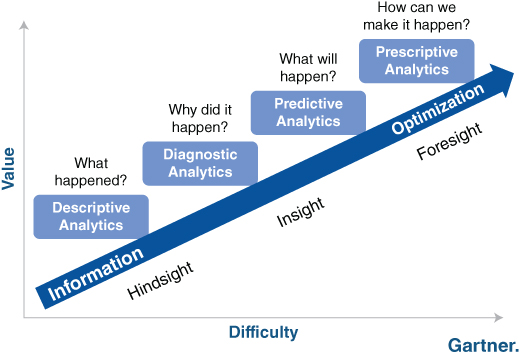Chapter 8Deeper Analyses:Asking the Right Questions
The formulation of a problem is often more essential than its solution, which may be merely a matter of mathematical or experimental skill. To raise new questions, new possibilities, to regard old problems from a new angle, requires creative imagination and marks real advances.
—Albert Einstein
After a company has evolved through the four steps of basic data architecture, the way Twilio has, they begin to ask, “What's next?” Gartner, the market research agency, created the Data Sophistication Journey to answer the question.
The Data Sophistication Journey maps a team's progression from descriptive analytics to diagnostic analytics, and from predictive analytics to prescriptive analytics. Each step demands more of the team than the last but provides incremental value for the effort.
Descriptive analytics encapsulates the dashboards that dot corporate walls and fill e-mail inboxes. These reports convey how metrics have changed over time and provide teams visibility into their execution relative to plans and goals. See Figure 8.1.

Figure 8.1 Gartner's Data Sophistication Journey
Diagnostic analysis answers questions such as “Why did sales increase last quarter?” More than simply tabulating sums and generating growth rates, diagnostic analytics requires a deeper understanding of statistics. It correlates different factors ...
Get Winning with Data now with the O’Reilly learning platform.
O’Reilly members experience books, live events, courses curated by job role, and more from O’Reilly and nearly 200 top publishers.

